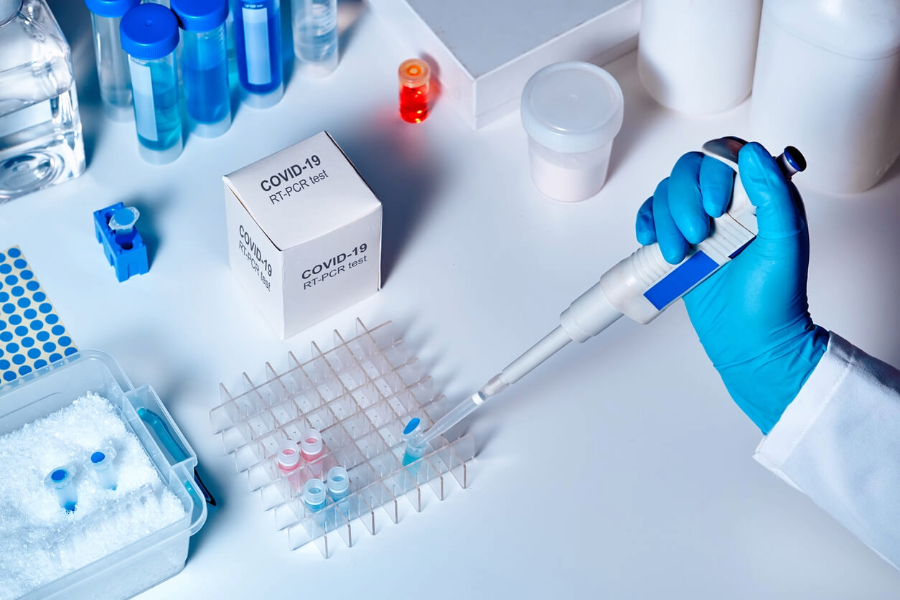Unlocking the precision of DNA amplification: Revolutionizing disease diagnosis
In the landscape of modern medicine, the advent of DNA amplification techniques has heralded a new era of precision and accuracy in disease diagnosis. From infectious pathogens to genetic aberrations, DNA amplification methods have become indispensable tools in the arsenal of healthcare professionals worldwide. This comprehensive blog aims to explore the intricate mechanisms, diverse applications, and transformative implications of DNA amplification for disease diagnosis.
Understanding DNA Amplification
At the heart of DNA amplification lies the ability to replicate specific DNA sequences with unparalleled precision. Polymerase Chain Reaction (PCR), the cornerstone of DNA amplification techniques, enables the exponential replication of targeted DNA regions through a series of heating and cooling cycles. By harnessing the enzymatic activity of DNA polymerases, PCR facilitates the amplification of even minute quantities of genetic material, making it a potent tool for disease diagnosis.
The PCR process begins with the denaturation of double-stranded DNA, followed by primer annealing and extension, ultimately resulting in the amplification of the target sequence. This elegant methodology has revolutionized molecular biology and paved the way for groundbreaking advancements in disease diagnostics.
Applications in Disease Diagnosis
The applications of DNA amplification in disease diagnosis are vast and multifaceted, spanning a spectrum of medical disciplines. In the realm of infectious diseases, PCR-based assays have become indispensable for the rapid and accurate detection of viral, bacterial, and parasitic pathogens. From influenza and tuberculosis to HIV and malaria, PCR assays offer unprecedented sensitivity and specificity, enabling clinicians to diagnose infections with confidence and precision.
The emergence of novel infectious threats, such as the COVID-19 pandemic, has underscored the pivotal role of DNA amplification in outbreak detection and containment. Real-time PCR assays targeting specific regions of the SARS-CoV-2 genome have facilitated the rapid diagnosis of infected individuals, guiding public health interventions and mitigating the spread of the virus.
Beyond infectious diseases, DNA amplification techniques play a pivotal role in the diagnosis and management of genetic disorders. From single-gene mutations to chromosomal aberrations, PCR-based assays enable the precise detection of genetic abnormalities associated with a myriad of inherited conditions. Conditions such as cystic fibrosis, sickle cell anemia, and Duchenne muscular dystrophy are routinely diagnosed using PCR-based methodologies, empowering clinicians to deliver personalized care tailored to the unique genetic profile of each patient.
Advancements in Nucleic Acid Amplification
As technology continues to evolve, so too do the methodologies and applications of nucleic acid amplification techniques. The advent of isothermal amplification methods, such as loop-mediated isothermal amplification (LAMP) and nucleic acid sequence-based amplification (NASBA), has expanded the accessibility and versatility of DNA amplification technologies. Unlike traditional PCR, isothermal amplification methods operate at a constant temperature, eliminating the need for complex thermal cycling equipment and streamlining the diagnostic process.
Isothermal amplification techniques have found widespread utility in point-of-care diagnostics, enabling rapid and cost-effective testing in resource-limited settings. From rural clinics to field hospitals, LAMP-based assays empower healthcare providers to diagnose infectious diseases and monitor treatment outcomes with minimal infrastructure requirements.
Multiplex PCR represents another significant advancement in nucleic acid amplification, allowing for the simultaneous amplification of multiple target sequences within a single reaction. By multiplexing primer sets specific to different genetic targets, clinicians can maximize the efficiency of diagnostic testing while conserving precious patient specimens. This multiplexing capability is particularly advantageous in settings where sample availability is limited, such as neonatal screening programs and forensic investigations.
Challenges and Future Perspectives
Despite the transformative potential of DNA amplification techniques, several challenges persist in the realm of disease diagnosis. The complexity and cost of PCR-based assays, coupled with the need for specialized equipment and trained personnel, pose barriers to widespread adoption in resource-constrained environments. Additionally, concerns regarding assay sensitivity, specificity, and reproducibility necessitate ongoing refinement and validation of molecular diagnostic protocols.
Addressing these challenges requires a concerted effort to democratize access to DNA amplification technologies and promote capacity-building initiatives in underserved communities. By leveraging advances in microfluidics, nanotechnology, and artificial intelligence, researchers aim to develop next-generation diagnostic platforms that are portable, user-friendly, and cost-effective. These innovative technologies have the potential to revolutionize disease diagnosis and empower frontline healthcare providers to deliver timely and targeted interventions to those in need.
Conclusion
DNA amplification techniques have emerged as indispensable tools in the diagnosis, monitoring, and management of human diseases. From the rapid detection of infectious pathogens to the precise characterization of genetic disorders, PCR-based assays have revolutionized the practice of medicine and transformed patient care paradigms worldwide. As technology continues to advance and our understanding of molecular biology deepens, the future holds immense promise for the continued evolution of DNA amplification methodologies. By embracing innovation, fostering collaboration, and prioritizing equity in healthcare delivery, we can harness the full potential of DNA amplification to combat disease and improve the lives of individuals around the globe.
Source

